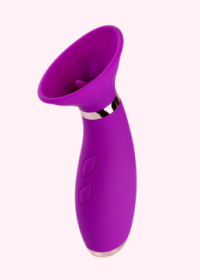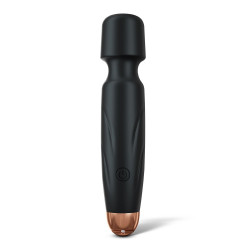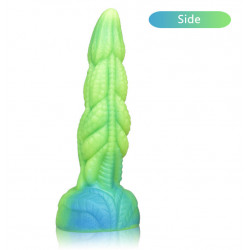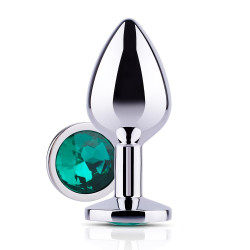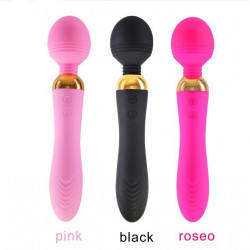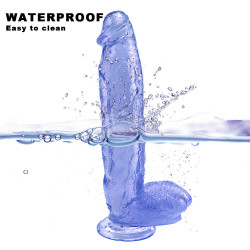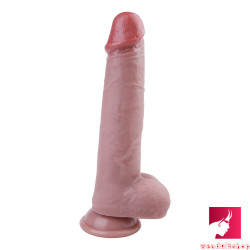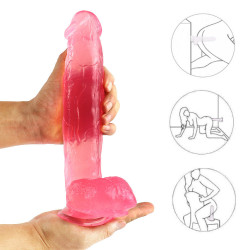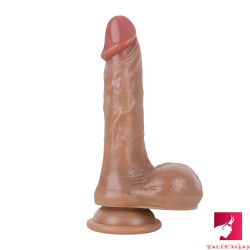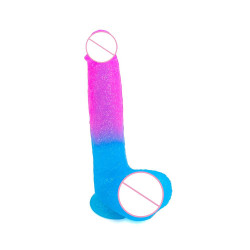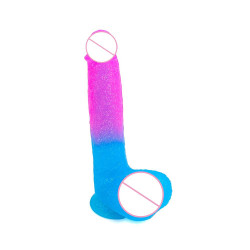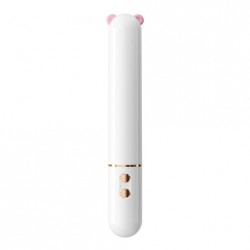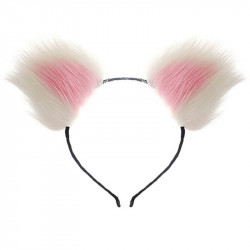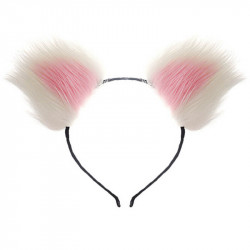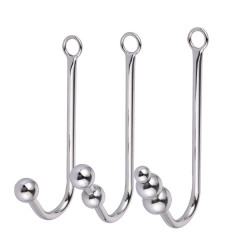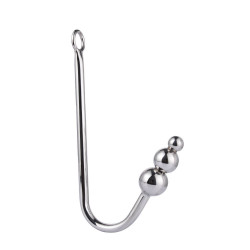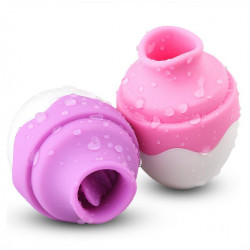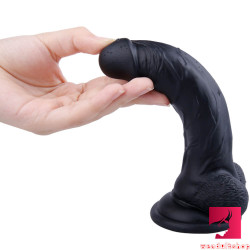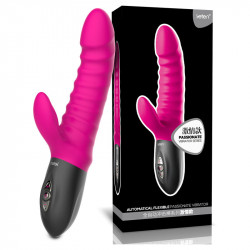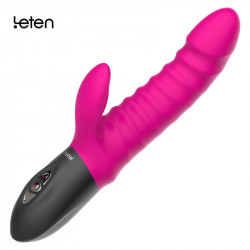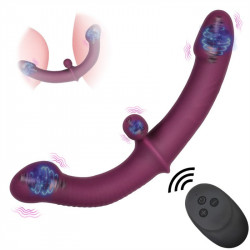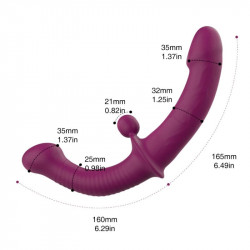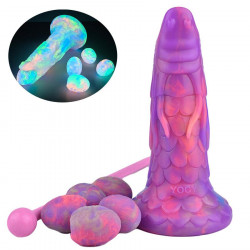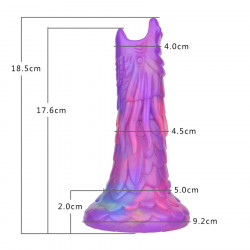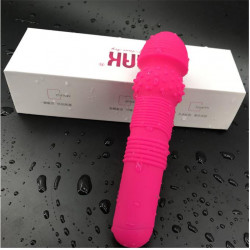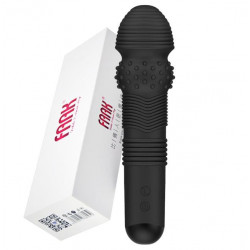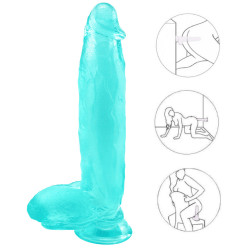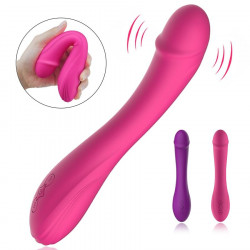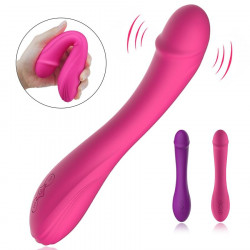BDSM Branding
Applying intense heat or cold to a submissive's flesh in order to create a burn mark is known as "BDSM branding." Depending on the methods and resources employed, the marks made by BDSM human branding may be either transient or permanent. Body branding and skin branding are other names for BDSM branding.
Why do people engage in BDSM branding?
According to British professional dominatrix Countess Diamond, "Permanent branding is regarded as the highest honor a dominant can bestow upon a submissive." This visual dedication symbolizes the relationship between the submit and the dominant.
The physical experience of being branded is also enjoyable to some people. Like many BDSM practices, branding causes a great deal of agony, which some individuals may find satisfying. During branding, some claim to enter a pleasant, serene condition that is akin to profound prayer or meditation.
Masochistic submissives, who become aroused when they experience pain, and sadistic dominants, who like causing agony to others, may also find branding exciting.
Similar to how farmers brand their animals to demonstrate ownership, dominants might also seek to brand their subordinates. Slave branding in BDSM indicates that a submissive is the property of their dominant. This outward reminder of their relationship to the dominant may be pleasing to a submissive in any interaction. To discipline a submissive, a dominant may also brand them.
The newest and most innovative kind of branding is BDSM human branding. Submissives used to get tattoos to demonstrate their relationship to their dominant, but eventually, tattoos gained popularity. Instead, people may opt for branding if they desire a more daring kind of marking.
Some people also find the option of either permanent or temporary branding interesting. Temporary branding can be an excellent method to experiment with branding without getting a permanent mark, but permanent branding is a terrific way to demonstrate a submissive's dedication to their dominant.
Anyone in the BDSM community has the option to mark themselves or see a professional for body alteration or scarification.
However, it is crucial to remember that branding, particularly permanent forms, raises issues related to safety, mental health, and the law. If at all, this extreme BDSM action should be handled with utmost caution and complete consent.
Branding Options
BDSMS brands can be either short-term or long-term. Because they affect the skin's surface and go away in a few months, temporary branding is also referred to as surface burns. A branding tool is applied to the skin once to create temporary brands. To make a more durable mark, permanent branding usually entails repeatedly striking the skin.
The only restriction on the kinds of brands that can be employed is creativity. A dominant may select a word, pattern, or symbol that holds particular significance for both the dominant and the submissive. Initials, numbers, hearts, and Xs are among the most popular brand selections.
Countess Diamond recommends that individuals "Make the design simple. If there is too much detail, the skin will cover it up once it has healed. Remain with geometric shapes and distinct lines."
Branding and Scarification
Because BDSM branding can result in a permanent scar on the flesh, it is frequently regarded as a form of scarification. When the skin is burned, the tissue shatters. Immune cells then proliferate the burn, preventing infections and promoting the healing of the skin's tissues. A scar is produced when collagen fills in the burned area of the skin. This procedure is comparable to how the body heals from a serious wound.
Throughout history, scarification has been a practice. In certain ancient societies, scarification was a rite of passage. In the same way that contemporary dominants may employ branding, some enslavers scarred their captives to demonstrate their ownership or to discipline them.
Does branding in BDSM hurt?
Branding is a traumatic procedure because it involves applying extreme heat or cold, which can cause skin burns. According to Countess Diamond, there are a number of ways to lessen pain, such as applying numbing lotions, but in my opinion, discomfort is a necessary component of the experience and the joy.
To endure the pain, the brain releases the feel-good neurotransmitter dopamine during the branding process. Some people may become addicted to this dopamine release and purchase multiple brands in an attempt to get the high. Keep in mind that childhood trauma and mental health issues have also been linked to self-harm. For alternative coping mechanisms, those who are playing unpleasantly for these reasons could think about seeing a therapist.
More About BDSM Branding
How to Brand a Partner or Yourself as Part of BDSM Play
The majority of BDSM specialists advise anyone interested in a brand to consult a professional in body modification or scarification. With a reduced risk of infection, skilled professionals may apply brands that scar in the desired manner.
Countess Diamond says it's worthwhile to look for "a professional dominant who offers scarification as a service," even though this professional might not be part of the BDSM community. Even if they are trained and aware of the health hazards, you and your partner can still have an intimate encounter. Similar to getting your partner's name tattooed, the intimacy and connection that the tattoo adds to your relationship is not diminished by the fact that the artist is doing it for you.
However, some people choose to brand themselves or their spouse at home because branding equipment is easily accessible; this should be done with utmost caution, if at all.
To numb the region, the brander could use a topical anesthetic to the branding location. To avoid infection, they should sanitize their equipment and work area, use latex medical gloves, and wash the recipient's skin with alcohol or antiseptic wipes. In order to brand the skin, they need to wait for the instrument to warm up before applying it. This is especially true if the tool employs heat rather than electricity or liquid nitrogen. It needs to burn the flesh, and too low a heat will leave an uncomfortable burn that will heal without a scar, Countess Diamond explained. Direct application of electrical and freezing instruments to the skin is possible for branders. They should not exert too much pressure because, as Countess Diamond states, "It's the heat that does the work rather than the pressure."
Branding Tools and Irons
Among the most widely used branding resources are:
Branding iron: This shaped piece of iron or stainless steel gets heated and then applied to the skin to leave the imprint of the shape behind.
Stainless steel strips: The brander places these heated strips on the skin in a pattern and strikes them to create a permanent brand.
Cauterizing equipment: This high-grade surgical apparatus can generate third-degree burns by heating up to 2,000 degrees Fahrenheit.
Electrosurgical pencil: This medical-grade device creates a brand design by using electrical charges.
Violet wands: Certain violet wands let users create designs by applying the device to their skin and moving it around, using a fastening that concentrates their electrical output.
Moxa cones: Moxibustion is a technique used in ancient Chinese medicine that involves burning and applying these herb cones to the skin to create scars.
Lasers: A precise design is printed onto the skin via a laser.
Freezing tool: This device creates a freeze brand using extremely cool liquid nitrogen.
Because branding tools for animals sting too much, BDSM branding tools should be designed for people. Because surgical-grade tools are so unlikely to rust, they are the safest. Additionally, Countess Diamond advises selecting a precise laser or electrosurgical pencil because these contemporary instruments provide more control over depth and a decreased risk of infection. Additionally, these procedures reduce keloid scarring, improving the appearance of the brand. Once more, though, the best way to minimize the hazards is to either avoid the technique entirely or see a specialist who specializes in body alteration or scarification.
BDSM Branding, Consent and Safety
Consent is essential for branding, as it is for other BDSM practices. If a submissive feels uncomfortable with branding, they should always be able to decline.
It's also critical to remember that branding is quite risky. Equipment that has rust on it may harbor tetanus-causing bacteria. To lower their chance of getting tetanus, the person getting branded should make sure they've received a vaccination within the last ten years.
Additionally, branding websites could be vulnerable to infection. The hazards can be reduced by ensuring sure the brander wears gloves, cleaning and sterilizing the skin, and sanitizing the tools. After branding, they should wrap the branded site in plastic wrap and use a therapeutic salve, like petroleum jelly or an antibiotic cream, to ease the pain. Without adhering to the burned skin, this wrap will keep the region clean. After an hour or two, it can be taken off and replaced with a bandage. In addition to allowing the wound to air and heal, bandages also prevent infection.
The branded individual should maintain the site as it recovers. For a few days, they should reapply the bandage twice a day and thoroughly bathe the area. The discomfort should be lessened by using extra therapeutic salve every day until the brand has healed. Usually, healing takes two or three weeks. Infection symptoms like pus, redness, warmth, and swelling should also be monitored. A medical expert should evaluate the branding location if someone observes these problems.
BDSM branding can also be made safer by obtaining instruction from a qualified dominatrix who provides scarification services. Countess Diamond emphasized, "This is [usually] a permanent mark and shouldn't be rushed into." You should not participate in training sessions if you lack the patience to do so!
In many places of the world, branding is considered to be grave bodily damage because it entails third-degree burns. Only Austria, New Zealand, and several US states allow it, according to 10Masters.
Even if they get permission, authorities have the right to penalize anyone who engages in branding in areas where it is prohibited. To find out what is permissible in their area, people who are interested in BDSM branding should study local legislation.

